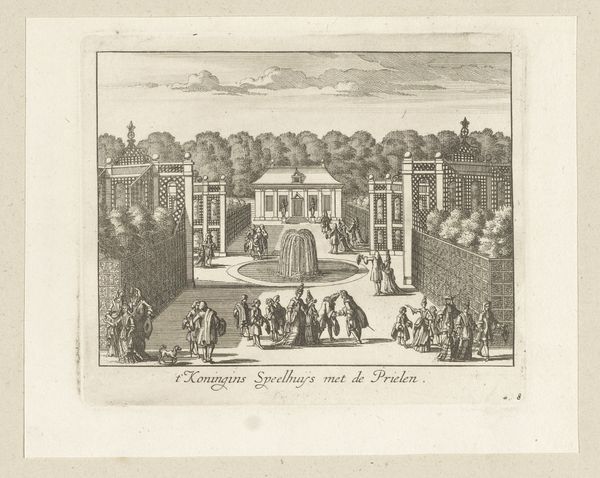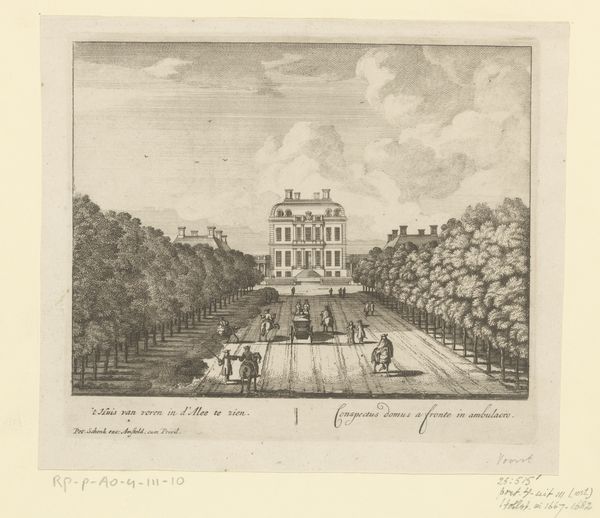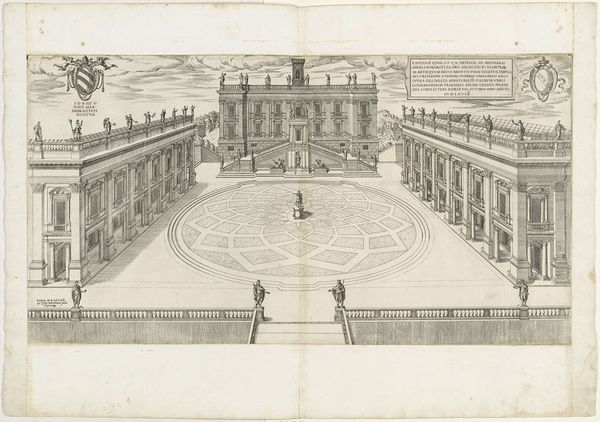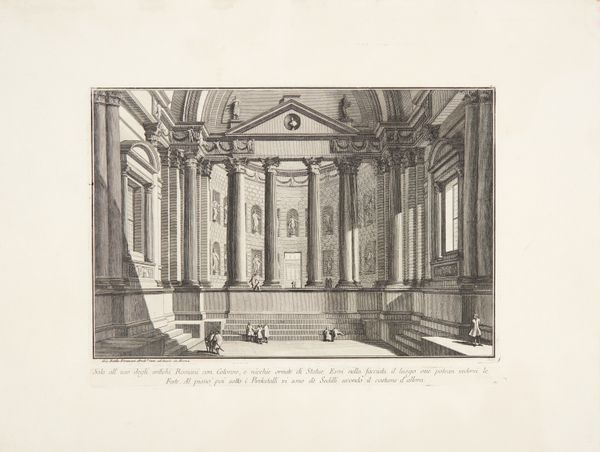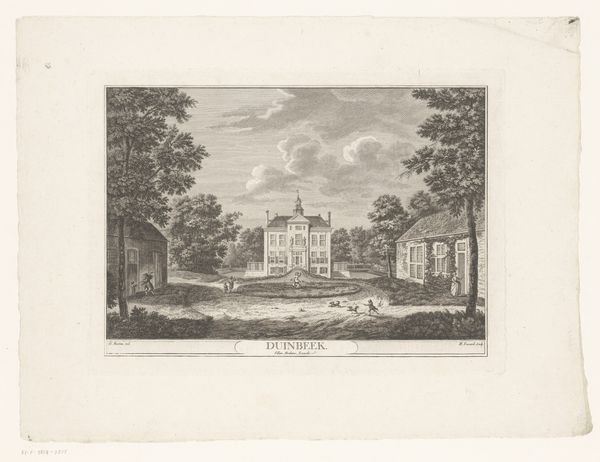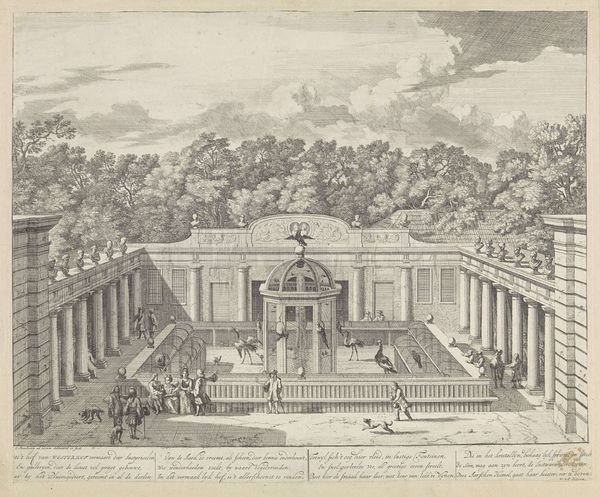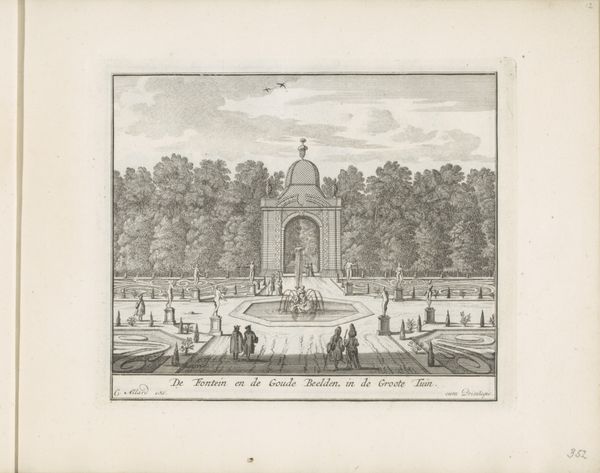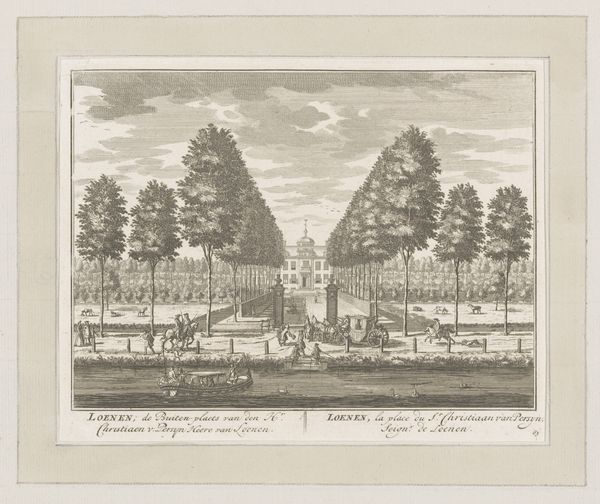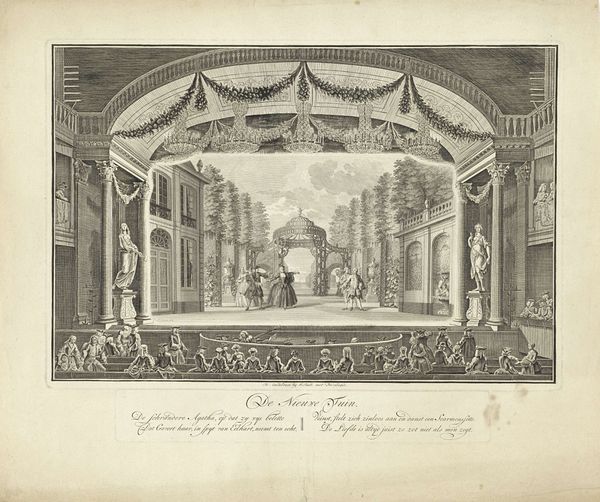
drawing, print, etching, architecture
#
drawing
#
baroque
# print
#
etching
#
landscape
#
perspective
#
cityscape
#
architecture
Dimensions: height 131 mm, width 169 mm
Copyright: Rijks Museum: Open Domain
Curator: This is an etching and print by Jan van Call, called "Paviljoens in de tuinen van Paleis Het Loo," placing us sometime after 1694. What strikes you about it initially? Editor: Well, the crisp lines and the way the architecture dominates the space create a real sense of formality. The symmetry is almost oppressive, wouldn’t you say? Curator: Oppressive? I see a very deliberate arrangement. The print medium allowed for the mass production of imagery celebrating royal power and refined taste. Consider the social context: images like this helped to solidify the image of William and Mary's court as a center of enlightened European culture. Etchings like these, accessible to a wide audience, showcased their vision. Editor: That’s a valid point about accessibility. But, aesthetically, the perspective, those receding lines, all serve to draw your eye to a vanishing point. It’s as though the architecture is more important than any human activity within the space. Note the delicate play of light and shadow across the surfaces; it enhances the geometric precision. Curator: Precision, yes, but it’s not just about geometry. Look at the way the garden is depicted—controlled, shaped by human labor. The gardens themselves become a material demonstration of power over nature, reflecting the political climate of the era and ideas about human dominance over the natural world. Editor: I can concede the garden's design underscores that, absolutely. However, consider the artistic license: Van Call focuses more on structure than botanical accuracy. These features prioritize the idea of a perfect, controlled space, adhering to the prevailing Baroque ideals. What do you think this reveals about period values? Curator: I agree it speaks volumes. This kind of image propagated and affirmed societal structures; printmaking helped disseminate these values throughout the society that consumed them. Editor: Interesting! I appreciate understanding now what underpinned the rigid structures I initially perceived. Curator: Exactly! The intersection between formal precision and its production origins tells a profound story about Baroque society.
Comments
No comments
Be the first to comment and join the conversation on the ultimate creative platform.

